
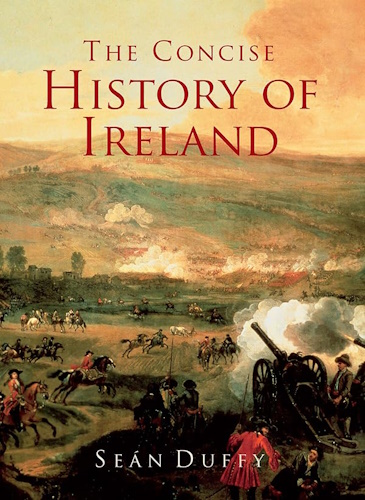
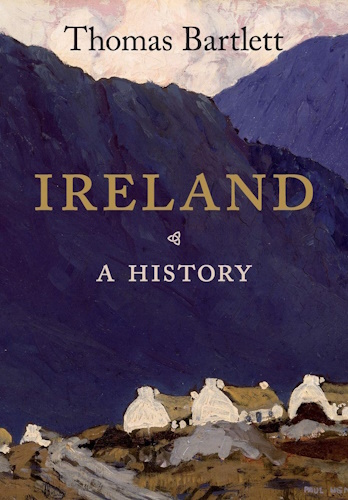
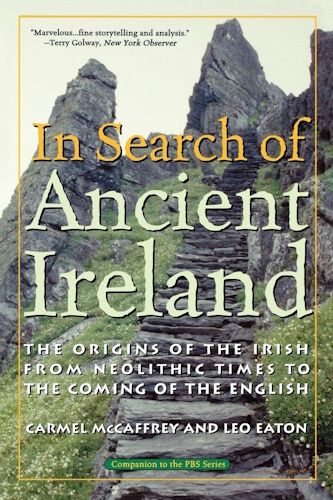


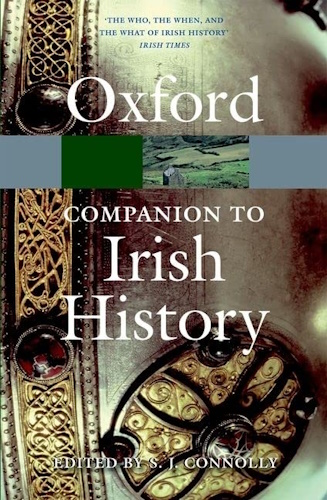
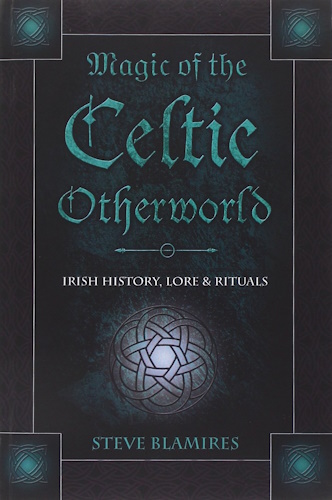
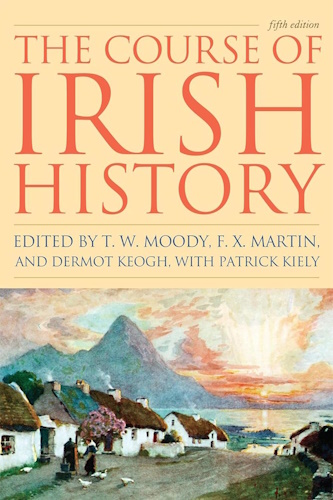
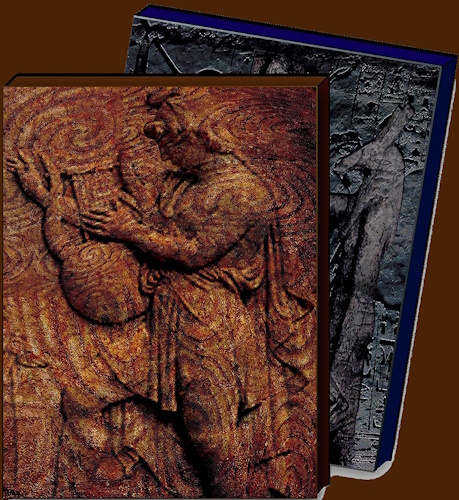
Symbolism of the Serpent
Appendix VII to Volume I
of
The Irish Origins of Civilization
by
Michael Tsarion
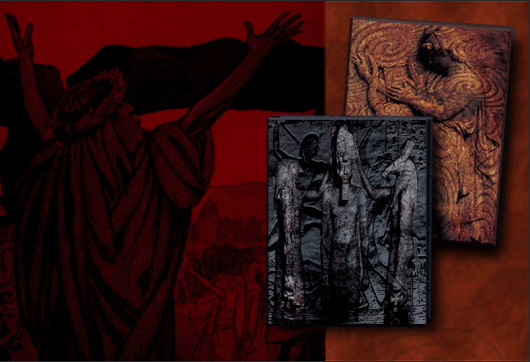
![]()
![]()

Jesus said, "The Pharisees and the scribes have taken the keys of knowledge (gnosis) and hidden them. They themselves have not entered, nor have they allowed to enter those who wish to. You, however, be as wise as serpents and as innocent as doves" - (Gospel of Thomas)
The Christian mythmongers working from Rome and elsewhere knew that the traditions and symbolism they presented as their own has a long history. They knew of the debt they owed to Egyptians, Phoenicians, Scythians, Persians and other races put to the sword by their bloodthirsty agents.
Of the heinous criminality, scholar R. A. Gabriel writes:
In 356 C. E. Constantinus II ordered the Egyptian temples of Isis-Osiris closed and forbade the use of Egyptian hieroglyphics as a religious language. In 380 C. E. Emperor Theodosius declared Christianity to be the official Roman state religion, and all pagan cults were thereafter forbidden. These edicts were devastating to Egyptian culture and religion, both of which had been preserved over millennia through the Egyptian language and the writing systems of Egyptian priests. In 391 C.E. the Patriarch of Alexandria, Theophilus, summoned the monks to arms and turned them against the city of Memphis and the great shrine of Serapis, the Serapeum, the main temple of the Osirian-Isis religion. The attack was akin to ordering the destruction of the Vatican. Egyptian priests were massacred in their shrines and in the streets. The ferocity of the violence consumed priests, followers, and the Egyptian intellectual elite of Alexandria, Memphis, and other cities of Egypt who were murdered and their temples and libraries destroyed. The institutional structure of Egyptian religion, then more than four millennia old, was demolished in less than two decades - (Jesus The Egyptian)
Astro-Theology
The mythmongers knew there was nothing demonic about the winged daemon that represented the Arya and priest-kings of old, those whose knowledge they had appropriated and cannibalized. They knew exactly what the terms "Christ" and "Messiah" meant. They knew of the age old relationship between the Sophic female and the protecting serpent, and that the antetype was astrological and astromantic.
…The outer darkness is a great serpent, the tail of which is in his mouth, and it is outside the whole world, and surroundeth the whole world: in it there are many places of punishment, and it containeth twelve halls – Egyptian Passage (from E. A. Wallis Budge's Gods of the Egyptians, Vol. 1)
Yes, they knew the truth, and so do their descendants. It is time that we too understand where the motifs originated and what they mean. (Here for more...)
Heavenly Serpents
The student of mythology would do well to consider the astral or cosmic origins of serpent symbolism. Many ancient mythologies, and many godlike characters who appear in world myth, owe their existence to cosmic disasters that occurred in our solar system and which were witnessed by the inhabitants of the Earth. The cataclysmic events (involving comets and exploding planets) were permanently archived in what we nowadays refer to as the "collective unconscious." They were deeply etched in the racial memory of all mankind. Throughout the ages they have been colorfully, and often obliquely, rendered in various mythological accounts and bizarre faerie tales that have perplexed and enthralled so many readers.
The legends that speak of celestial upheaval, and of gods and deities with fantastic strength, power, and luminance, make a great deal more sense when we read them aright. For more information on this phenomenon, we refer the reader to the works of Comyns Beaumont and Immanuel Velikovsky, the original experts to make a study of world myth in this context.


Etymology
The following names and terms refer directly to the serpent:
PENTIUM (Not too far from Serpentium. See corporate logo of Intel for confirmation.)
URAEUS (from ouro, meaning "kingly." This serpentine emblem of royalty was originally the symbol of the twin serpent goddesses Nekhbet and Wadjet. Here for more...)
OPHION (The Greek name for a primordial creator god later cast down. His consort was a sacerdotal female named Eurynome.)
CANAAN (The ancient name for the region where modern day Jordan, Gaza, Palestine, and Israel now exist. The term comes from a Phoenician word connoting the serpent kings.)
KOHEN (Officially this word denotes a descendant of Aaron and a Jewish priest. However, it too means "serpent priest.")
LADON (Name for the guardian of the garden of Hesperides.)
DRACO (Name of the giant constellation in the northern sky, the head of which attends the circumpolar zone.)
DRAGOONS (A name for royal appointed troops in Scotland and England.)
CERIDWEN (A Welsh serpent goddess revered by the Pheryllt priesthood. The name allegedly means "crooked woman," and is a reference either to Ursa Minor or Draco.)
GNADIR/ADDER (This word comes from the Gaelic Naddred, meaning serpent and from Gnadr, meaning "serpent priest." The prefix "Gn" is found in the word Gnosis, meaning "knowledge." "Cn" and "Kn" are two variations, hence Cain and Kohen. The insignia "G," as found in Masonry, signifies knowledge and the men of knowledge. G is the seventh letter of the alphabet, and seven has long been a number of wisdom and occult science. It will not evenly divide into ten or three hundred and sixty. Unlike other numbers between one and ten, seven leave a remainder. Symbolically speaking, it is the numeral of independence and individuality. In Old Norse the word serpent was Nidar, as in the so-called "nidhog serpent," the serpent who eats at the roots of Yggdrasil, the Nordic World Ash Tree. Nidar Ros means "old serpent" and referred to the ancient knowledge of the Druids. Interestingly, the serpent was adopted as a symbol by Olaf I, the king who Christianized Norway. He literally adopted the symbol of those he sought to annihilate.)
GAONIM (The letter "G" of the Masons connotes the Gaonim - the Exilarchs or Princes of Light. They were originally Levites and later they were elite Pharisees and Sadducees Order.)
NADA (The high king of ancient Ireland was known as Nuada or Nada or Nuah. The name is a variation of Naddred, meaning "wise serpent," and is probably also akin to Naga which can be rendered Nasha, hence "nation." The word naga denotes the serpent-kings of India. Nuada's Babylonian counterpart is Nata, who, like the Irish Nada, was a survivor of the great prehistoric flood.)
PENDRAGON (In Welsh mythology this was a title denoting Celtic chieftains, such as King Arthur.)
NACAAL (Denotes the semi-mythical serpent people of the Aztecs and Maya.)
KUMARAS (This word denotes the semi-mythical serpent races of India.)
CHERUBIM AND SERAPHIM (These terms originally referred to the Elohim or nine creator gods of Egypt. In Hebrew, they mean "fiery" or "blazing serpents.")
NAHASH (The word means "serpent" in Hebrew. The root nshsmeans "to find out" or "discover." It is not surprise, therefore, to see the medical corporations, technical and educational institutions, and government think tanks employing the symbol of the serpent on their emblems and logos.)
NASHA (An alternative rendering of Nagas. It could be the origin of the word "nation.")
AMARU (An ancient word meaning "serpent.")
AMERICA (From Amaraka, meaning "land of the serpents.")
VOTAN (or Wotan, from Teutonic legends, allegedly the Germanic version of the Norse Odin.)
HERMES (This word means "phallic.")
BRIGHUS (Denotes the holy men of India.)
SHAKTI (The name of the Hindu goddess frequently personified as a serpent.)
NAGADEV (name of Siva, meaning "lord serpent" or "divine serpent.")
CARIBBEAN (From Ka-rib, meaning "serpent.")
SUMERIA (Possibly from the Gaelic Sumaire, meaning "serpent.")
LAKOTA (From a Sioux word meaning "snake.")
HERNE (also known as Cernunnos and Nikor. The prototype of Hermes, Mercury, Thoth, and Jesus.)
DJEDHI (Egyptian term for an ancient sect of serpent priests. This is the origin of the fictional characters, the Jedi.)
BARAKA (Sufi term for the serpent.)
CARNAC / KARNAK (Carnac in Brittany has long been associated with the serpent cults. It features many strange megalithic sites. Karnak in Upper Egypt, is one of Egypt's oldest cities. It features one of the world's most impressive temples, dedicated to Amen Ra.)
PHOENIX (A mythical serpentine bird.)
SEKHMET / SEKHEM (Names that denote the serpent power.)
NEC / NECH / NEK (These terms also connote the serpent. The word nech allegedly means "temptation.")
AZOTH (In alchemy this denotes the symbol of the egg and serpent. It also refers to the god Mercury. It is the origin of the phoneme AZT.)
PNEUMA (A Greek word denoting breath and lifeforce that were usually personified as a serpent.)
APEP / APOPHIS (The Egyptian serpent of darkness. This is the origin of terms such as Pepsi, Dr. Pepper, Sergeant Pepper, and Pepsid, etc.)
BUTO (Also known as Udjo and Wadjet meaning "green one." The predynastic serpent goddess and patron deity of Lower Egypt. She was closely associated with the cat goddess Bast and with Nekhbet, the vulture goddess and patron of Upper Egypt. Her serpentine image is seen on the head of the god Ra.)
RENENUTET (A cobra formed goddess, almost identical with the goddess Buto, she was worshiped throughout Egypt. Like Buto and Nekhbet, Renenutet symbolized the human soul.)
NEHUSHTAN (The rod Moses changed into a serpent in front of the Pharaoh and later in the desert wilderness, the so-called Brazen Standard. As I show in the Female Illuminati program, this was the emblem of the Great Royal Wives or female Dragon Court.)
HYDRA (The demonic serpent of Greek myth. Now the name of a giant serpentine constellation.)
AHRIMAN (The serpentine god of darkness in Persian mythology.)
SHAITAN (The name for the evil one in Persian myth.)
NINE (This word also connotes the serpent, as does the shape of the number.)
NUMBER 18 (is similar in form to the caduceus.)
SPERM (Is curiously serpentine in form.)
LEMNISCATE (A figure that looks like the number 8 in its side. It symbolizes the god Mercury and also the zodiac.)
THE POPE'S CROZIER (Like the number 9, it connotes the serpent. It is a stylized version of the Druidic sickle.)
THE DOLLAR SIGN $ (Connotes the serpent.)
ART (From an Egyptian word aart, meaning "serpent.")
HURRICANE (This word refers to the fury of the serpentine force of winds and storms.)
TYPHOON (From Typhon, the god of evil in Egyptian mythology. Always depicted as a undulating serpent.)





..the ritual swallowing by the Snake is to be interpreted as a return to the womb - on the one hand because the Snake is often described as female, on the other, because entering the belly of the divine also carries a symbolism of return to embryonic state...It represents not so much a ritual death followed by resurrection as a complete regeneration of the initiate through his gestation and birth by the Great Mother - Mircea Eliade (Rites and Symbols of Initiation)




. . .
RELEVANT QUOTES
There is scarcely a spot in the world in which the serpent has not received the prayers and praises of men. At first an emblem of the sun's light and power, it is worshipped in lands where the sun is not recognized as a Deity, for instance on the coasts of Guinea where the negroes curse him every morning as he rises, because he scorches them at noon. The winged serpent was a symbol of the Gods of Egypt, Phoenicia, China, Persia, and Hindustan. The Tartar princes still carry the image of a serpent upon a spear as their military standard. Almost all the Runic inscriptions found upon tombs are engraved upon the sculptured forms of serpents. In the temple of the Bona Dea, serpents were tamed and consecrated. In the mysteries of Bacchus, women used to carry serpents in their hands and twined around their brows, and with horrible screams cry, Eva! Eva! In the great temple of Mexico, the captives taken in war and sacrificed to the sun, had wooden collars in the shape of a serpent put round their necks. And water-snakes are to this day held sacred by the natives of the Friendly Isles. It was not only worshiped as a symbol of light, of wisdom and of health, personified under the name of God, but also as an organ of divination - W. Winwood Reade (The Veil of Isis)
Serapis and Jesus were both represented by a great serpent – E. Valentia Straiton (The Celestial Ship of the North)
The worship of the serpent was therefore universal - George Smith (The Gentile Nations)
...the serpent was the most ancient of the heathen gods - J. B. Deane (Worship of the Serpent)
A symbol of sacred knowledge in antiquity was a tree, ever guarded by a serpent, the serpent or dragon of wisdom. The serpent of Hercules was said to guard the golden apples that hung from the pole, the Tree of Life, in the midst of the garden of Hesperides. The serpent that guarded the golden fruit...and the serpent of the Garden of Eden...are the same – E. Valentia Straiton (The Celestial Ship of the North)
...the nuptial tree, round which coils the serpent, is connected with time and with life as a necessary condition; and with knowledge – the knowledge of a scientific priesthood, inheriting records and traditions hoary, perhaps, with the snows of a glacial epoch – Kennersley Lewis
...the Egyptians made use of an instrument called the ur-heka, or great magical power. It is sometimes a sinuous, serpent-like rod without the serpent's head. At others it has the head of the serpent on it, united with the head of a ram - Gerald Massey (Ancient Egypt: Light of the World)
...the Uraeus...is frequently represented as guarding the sacred cypress groves of the Amenti (Sheol) by breathing out fire to destroy any invading or unjustified soul. Hence the origin of the Grecian myth of the Hesperides garden and the fire-breathing dragons which guarded it - William Ricketts Cooper (The Serpent Myths of Ancient Egypt)
The asp was sacred to Kneph. The most poisonous winged serpent in the land was made the personification of the creator and ruling spirit! In fact...its figure was in consequence fixed to the headdress of Egyptian kings; and a prince, on his accession to the throne, was entitled to wear this distinctive badge of royalty...Mr. Champollion has satisfactorily accounted for the name Uraeus, given to the snake, by, suggesting that the word derives its origin...from Ouro, in Coptic "a king"...Of Ptah it may be necessary to observe, that he was regarded as the Lord of Truth, and it is said to have been produced in the shape of an egg from the mouth of Kneph, and represented the creative power of Deity - George Smith (The Gentile Nations, 1853)
The accepted theory that the serpent is evil cannot be substantiated. It has long been viewed as the emblem of immortality. It is the symbol of reincarnation, or metempsychosis, because it annually sheds its skin...It was also believed that snakes swallowed themselves, and this resulted in their being considered emblematic of the Supreme Creator, who periodically reabsorbed His universe back into Himself. In "Isis Unveiled," H. P. Blavatsky makes this significant statement concerning the origin of serpent worship: "Before our globe had become egg-shaped or round it was a long trail of cosmic dust or fire-mist, moving and writhing like a serpent. This, say the explanations, was the Spirit of God moving on the chaos until its breath had incubated cosmic matter and made it assume the annular shape of a serpent with its tail in its month--emblem of eternity in its spiritual and of our world in its physical sense" - Manly Palmer Hall (The Secret Teachings of All Ages)
The figure of Eve is based upon much older mythology and may be traced back to the ancient Mother Goddess or World Mother and the serpent cults of the pre-Biblical period. Closer examination of the name 'Eve' revealed her serpent origins, for the Hebrew for Eve is havvah, meaning 'mother of all things,' but also 'serpent.' Likewise, the Arabic words for 'snake,' 'life,' and 'teaching,' are closely related to the word or name 'Eve' – Gardiner and Osborn (The Serpent Grail)
The priests of the Mysteries were symbolized as a serpent, sometimes called Hydra...The Serpent Kings reigned over the earth. It was these Serpent Kings who founded the MysterySchools which later appeared as the Egyptian and Brahmin Mysteries...The serpent was their symbol...They were the true Sons of Light, and from them have descended a long line of adepts and initiates - Manly Palmer Hall
The Uraeus is a serpent issuing forth from the forehead of many gods being also an ornament of the royal crowns...The amulet of the serpent head is the symbol of the goddess Isis who is often represented by a serpent – Karel Weinfurter (Man's Highest Purpose)
A drawing, brought by Colonel Coombs, from a sculptured column in a cave-temple in the South of India, represents the first pair at the foot of an ambrosial tree, and a serpent entwined among the heavily laden boughs, presenting to them some of the fruit from his mouth - John G. Jackson (Pagan Origins of the Christ Myth)
One striking and important specimen of early type in the British Museum collection has two figures sitting one on each side of a tree, holding out their hands to the fruit, while at the back one (the woman) is etched a serpent...thus it is evident that a form of the "Fall," similar to that in Genesis, was known in early times in Babylonia - John G. Jackson
Jane Ellen Harrison demonstrated over half a century ago that in the field festivals and mystery cults of Greece numerous vestiges survived of a pre-Homeric mythology in which the place of honor was held, not by the male gods of the sunny Olympic pantheon, but by a goddess, darkly ominous, who might appear as one, two, three, or many and was the mother of both the living and the dead. Her consort was typically in serpent form - Joseph Campbell (Occidental Mythology)
In Eve's scene at the tree…nothing is said to indicate that the serpent who appeared and spoke to her was a deity in his own right, who had been revered in the Levant for at least seven thousand years before the composition of the Book of Genesis - Joseph Campbell (Occidental Mythology)
...in the Near East the primordial serpent is described as feminine, and we may suspect that in this region the myth did indeed become a metaphor for the conquest of matriarchy. But its universality suggests that there is yet a deeper, psycho-spiritual meaning behind it - Ariel Guttman and Kenneth Johnson (Mythic Astrology)
Delphi was also known as Pytho, because before the coming of Apollo the site was haunted by a monstrous serpent, or dragon, the Python - David Fideler (Jesus Christ, Sun of God)
The serpent energy is definitely one of the most primeval archetypes and in all ancient cultures was intimately connected with the mysteries of the divine female - Crompton
Then the Female Spiritual Principle came in the Snake Instructor, and it taught them saying..."with death you shall not die" - (The Hypostasis of the Archon)
As long as humanity kept records of its existence, serpents were used as emblems of the intelligence of God. In ancient times and as widespread and diverse as Australia, China, Japan, Mexico, New Zealand, Babylonia, Sumeria, Egypt, India, and Central America, serpents were feared and worshipped as gods for thousands of years...To this day, serpents or dragons signify divine heritage and royalty in many Asian countries, while in the West the serpent represents wisdom and knowledge…Among nearly all ancient peoples the serpent was accepted as the ultimate symbol of wisdom or salvation - Tony Bushby (Secret in the Bible)
It may seem extraordinary that the worship of the serpent should ever have been introduced into the world, and it must appear still more remarkable that it should almost universally have prevailed. As mankind are said to have been ruined through the influence of this being, we could little expect that it would, of all other objects, have been adopted as the most sacred and salutary symbol, and rendered the chief object of adoration. Yet so we find it to have been, for in most of the ancient rites there is some allusion to it - (Ophiolatreia)
The Hebrews follow the Babylonians in confusing the Uraeus Serpent with the serpent of death - Gerald Massey (Ancient Egypt: Light of the World)
…it was the Serpent of Wisdom that first offered the fruit of the Tree of Knowledge for the Enlightenment of Mankind; whether this be Egyptian, Akkadian, or Gnostic, it is the Good Serpent. And as Guardian of the Tree set in Heaven it was the Good Serpent, or intelligent Dragon, as keeper of the treasures of Astral knowledge. It was the later Theology, Persian and Hebrew, that gave the character of the Evil One to the Serpent of Wisdom, and perverted the original meaning, both of the temptation and the Tempter who protected the Tree; which has been supplemented by the theology of the Vitriol-throwers who have scarified and blasted the face of nature on earth, and defiled and degraded the starry Intelligencers in heaven – Gerald Massey (The Hebrew and Other Creations Fundamentally Explained)
The curse in Genesis on the woman, that she should be at enmity with the serpent, is obviously misplaced: it must refer to the ancient rivalry decreed between the sacred king Adam and the Serpent for the favors of the Goddess - Robert Graves (The White Goddess)
The Uraeus is a serpent issuing forth from the forehead of many gods being also an ornament of the royal crowns...The amulet of the serpent head is the symbol of the goddess Isis who is often represented by a serpent - Karel Weinfurter (Man's Highest Purpose)
And I shall destroy everything I created. The earth will again appear as primordial ocean…I am everything that remains…after I have turned myself back into a snake that no man knows - Hermann Kees (Der Gotterglaube im alten Aegypten)
The Pope, though he permits our typifying Jesus as a fish, as the sun, as bread, as the vine, as a shepherd, as a rock, as a conquering hero, even as a winged serpent, yet, threatens us with hell fire if we ever dare to celebrate him in terms of the venerable gods whom he has superseded and from whose ritual every one of these symbols has been derived - Robert Graves
The curse in Genesis on the woman, that she should be at enmity with the serpent, is obviously misplaced: it must refer to the ancient rivalry decreed between the sacred king Adam and the Serpent for the favors of the Goddess - Robert Graves
...the serpent as uraeus is simply the phonetic of the letter g - William Ricketts Cooper (The Serpent Myths of Ancient Egypt)
The Bible uses many Hebrew words to describe the snake: akshub means a coiled serpent, epheh is a hissing, probably venomous snake, Livyathin (Leviathan) is the sea serpent, nachash, a hissing serpent, pethen, a twisting snake, probably the asp, seraph, the burning serpent, shephiyphon, a snapping serpent, the adder, tsepha or tsiphoniy is the toungue thrusting snake. We might compare the Greek words for snake: aspis, drakon, echnida. Herpeton from whence we get the classical name for the study of serpents, herpetology, and ophis which gave a name to an early Christian sect - R. T. Mason (The Divine Serpent in Myth and Legend)


RELEVANT LINKS
Ophiolatreia by Anonymous (1889)
Dragons and Dragon Lore By Ernest Ingersoll
The Worship of the Serpent by John Bathurst Deane
Teshub of the Hurrians
Illuyanka the Serpent
The Serpent Vritra
The Female Illuminati
![]()
![]()
![]()
![]()
Disclaimer:
Some material presented will contain links, quotes, ideologies, etc., the contents of which should be understood to first, in their whole, reflect the views or opinions of their editors, and second, are used in my personal research as "fair use" sources only, and not espousement one way or the other. Researching for 'truth' leads one all over the place...a piece here, a piece there. As a researcher, I hunt, gather and disassemble resources, trying to put all the pieces into a coherent and logical whole. I encourage you to do the same. And please remember, these pages are only my effort to collect all the pieces I can find and see if they properly fit into the 'reality aggregate'.
Personal Position:
I've come to realize that 'truth' boils down to what we 'believe' the facts we've gathered point to. We only 'know' what we've 'experienced' firsthand. Everything else - what we read, what we watch, what we hear - is what someone else's gathered facts point to and 'they' 'believe' is 'truth', so that 'truth' seems to change in direct proportion to newly gathered facts divided by applied plausibility. Though I believe there is 'truth', until someone representing the celestial realm visibly appears and presents the heavenly records of Facts And Lies In The Order They Happened, I can't know for sure exactly what "the whole truth' on any given subject is, and what applies to me applies to everyone. Until then I'll continue to ask, "what does The Urantia Book say on the subject?"
~Gail Bird Allen
![]()
![]()








-
Urantia Book, 44:0.11 - The Celestial Artisans
Never in your long ascendancy will you lose the power to recognize your associates of former existences. Always, as you ascend inward in the scale of life, will you retain the ability to recognize and fraternize with the fellow beings of your previous and lower levels of experience. Each new translation or resurrection will add one more group of spirit beings to your vision range without in the least depriving you of the ability to recognize your friends and fellows of former estates.
-
Princess Bride 1987 Wallace Shawn (Vizzini) and Mandy Patinkin (Inigo Montoya)
Vizzini: HE DIDN'T FALL? INCONCEIVABLE.
Inigo Montoya: You keep using that word. I do not think it means what you think it means. -
Urantia Book, 117:4.14 - The Finite God
And here is mystery: The more closely man approaches God through love, the greater the reality -- actuality -- of that man. The more man withdraws from God, the more nearly he approaches nonreality -- cessation of existence. When man consecrates his will to the doing of the Father's will, when man gives God all that he has, then does God make that man more than he is.
-
Urantia Book, 167:7.4 - The Talk About Angels
"And do you not remember that I said to you once before that, if you had your spiritual eyes anointed, you would then see the heavens opened and behold the angels of God ascending and descending? It is by the ministry of the angels that one world may be kept in touch with other worlds, for have I not repeatedly told you that I have other sheep not of this fold?"
-
Urantia Book, Foreword - 0:12.12 - The Trinities
But we know that there dwells within the human mind a fragment of God, and that there sojourns with the human soul the Spirit of Truth; and we further know that these spirit forces conspire to enable material man to grasp the reality of spiritual values and to comprehend the philosophy of universe meanings. But even more certainly we know that these spirits of the Divine Presence are able to assist man in the spiritual appropriation of all truth contributory to the enhancement of the ever-progressing reality of personal religious experience—God-consciousness.
-
Urantia Book, 1:4.3 - The Mystery Of God
When you are through down here, when your course has been run in temporary form on earth, when your trial trip in the flesh is finished, when the dust that composes the mortal tabernacle "returns to the earth whence it came"; then, it is revealed, the indwelling "Spirit shall return to God who gave it." There sojourns within each moral being of this planet a fragment of God, a part and parcel of divinity. It is not yet yours by right of possession, but it is designedly intended to be one with you if you survive the mortal existence.
-
Urantia Book, 1:4.1 - The Mystery Of God
And the greatest of all the unfathomable mysteries of God is the phenomenon of the divine indwelling of mortal minds. The manner in which the Universal Father sojourns with the creatures of time is the most profound of all universe mysteries; the divine presence in the mind of man is the mystery of mysteries.
-
Urantia Book, 1:4.6 - The Mystery Of God
To every spirit being and to every mortal creature in every sphere and on every world of the universe of universes, the Universal Father reveals all of his gracious and divine self that can be discerned or comprehended by such spirit beings and by such mortal creatures. God is no respecter of persons, either spiritual or material. The divine presence which any child of the universe enjoys at any given moment is limited only by the capacity of such a creature to receive and to discern the spirit actualities of the supermaterial world.
-
Urantia Book, 11:0.1 - The Eternal Isle Of Paradise
Paradise is the eternal center of the universe of universes and the abiding place of the Universal Father, the Eternal Son, the Infinite Spirit, and their divine co-ordinates and associates. This central Isle is the most gigantic organized body of cosmic reality in all the master universe. Paradise is a material sphere as well as a spiritual abode. All of the intelligent creation of the Universal Father is domiciled on material abodes; hence must the absolute controlling center also be material, literal. And again it should be reiterated that spirit things and spiritual beings are real.
-
Urantia Book, 50:6.4 - Planetary Culture
Culture presupposes quality of mind; culture cannot be enhanced unless mind is elevated. Superior intellect will seek a noble culture and find some way to attain such a goal. Inferior minds will spurn the highest culture even when presented to them ready-made.
-
Urantia Book, 54:1.6 - True And False Liberty
True liberty is the associate of genuine self-respect; false liberty is the consort of self-admiration. True liberty is the fruit of self-control; false liberty, the assumption of self-assertion. Self-control leads to altruistic service; self-admiration tends towards the exploitation of others for the selfish aggrandizement of such a mistaken individual as is willing to sacrifice righteous attainment for the sake of possessing unjust power over his fellow beings.
-
Urantia Book, 54:1.9 - True And False Liberty
How dare the self-willed creature encroach upon the rights of his fellows in the name of personal liberty when the Supreme Rulers of the universe stand back in merciful respect for these prerogatives of will and potentials of personality! No being, in the exercise of his supposed personal liberty, has a right to deprive any other being of those privileges of existence conferred by the Creators and duly respected by all their loyal associates, subordinates, and subjects.
-
Urantia Book, 54:1.8 - True And False Liberty
There is no error greater than that species of self-deception which leads intelligent beings to crave the exercise of power over other beings for the purpose of depriving these persons of their natural liberties. The golden rule of human fairness cries out against all such fraud, unfairness, selfishness, and unrighteousness.






